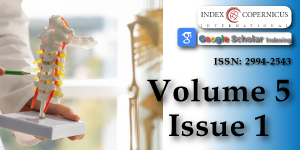Finite element method in equine orthopedics
Main Article Content
Article Details
Copyright (c) 2021 de Souza AF, et al.

This work is licensed under a Creative Commons Attribution 4.0 International License.
Gilbertson LG, Goel VK, Kong WZ, Clausen JD. Finite element methods in spine biomechanics research. Crit Rev Biomed Eng. 1996; 23: 411–473. PubMed: https://pubmed.ncbi.nlm.nih.gov/9017345/
Lisiak-Myszke M, Marciniak D, Bieliński M, Sobczak H, Garbacewicz Ł, et al. Application of finite element analysis in oral and maxillofacial surgery: A literature review. Materials. 2020; 13: 3063. PubMed: https://pubmed.ncbi.nlm.nih.gov/32659947/
Mehta F, Joshi H. Finite element method: An overview. J Dent Med Sci. 2016; 15: 38–41.
Necas L, Hrubina M, Cibula Z, Behounek J, Krivanek S, et al. Fatigue failure of the sliding hip screw–clinical and biomechanical analysis. Comput Methods Biomech Biomed Engin. 2017; 20: 1364–1372. PubMed: https://pubmed.ncbi.nlm.nih.gov/28793805/
O’Hare LMS, Cox PG, Jeffery N, Singer ER. Finite element analysis of stress in the equine proximal phalanx. Equine Vet J. 2013; 45: 273–277. PubMed: https://pubmed.ncbi.nlm.nih.gov/22943561/
Hinterhofer C, Stanek C, Haider H. Finite element analysis (FEA) as a model to predict effects of farriery on the equine hoof. Equine Vet J. 2001; 33: 58–62. PubMed: https://pubmed.ncbi.nlm.nih.gov/11721570/
McClinchey H, Thomason J, Jofriet J. Isolating the effects of equine hoof shape measurements on capsule strain with finite element analysis. Vet Comp Orthop Traumatol. 2003; 16: 67-75.
Harrison SM, Whitton RC, Kawcak CE, Stover SM, Pandy MG. Evaluation of a subject-specific finite-element model of the equine metacarpophalangeal joint under physiological load. J Biomech. 2014; 47: 65–73. PubMed: https://pubmed.ncbi.nlm.nih.gov/24210848/
Les CM, Keyak JH, Stover SM, Taylor KT. Development and validation of a series of three-dimensional finite element models of the equine metacarpus. J Biomech. 1997; 30: 737–742. PubMed: https://pubmed.ncbi.nlm.nih.gov/9239555/
McCarty CA, Thomason JJ, Gordon KD, Burkhart TA, Milner JS, et al. Finite-Element Analysis of Bone Stresses on Primary Impact in a Large-Animal Model: The Distal End of the Equine Third Metacarpal. Plos One. 2016; 11: e0159541. PubMed: https://pubmed.ncbi.nlm.nih.gov/27459189/
Frazer LL, Santschi EM, Fischer KJ. Impact of a void in the equine medial femoral condyle on bone stresses and peak contact pressures in a finite element model. Vet Surg. 2019; 48: 237–246. PubMed: https://pubmed.ncbi.nlm.nih.gov/30556152/
Galbusera F, Cina A, Panico M, Albano D, Messina C. Image-based biomechanical models of the musculoskeletal system. Eur Radiol Exp. 2020; 4: 49. PubMed: https://www.ncbi.nlm.nih.gov/pmc/articles/PMC7423821/
Gföhler M, Peham C. What can finite element analysis tell us? Equine Vet J. 2013; 45: 265–266.
Carvalho LE, Sobieranski AC, von Wangenheim A. 3D Segmentation Algorithms for Computerized Tomographic Imaging: a Systematic Literature Review. J Digit Imaging. 2018; 31: 799-850. PubMed: https://pubmed.ncbi.nlm.nih.gov/29915942/
Imai K. Computed tomography-based finite element analysis to assess fracture risk and osteoporosis treatment. World J Exp Med. 2015; 5: 182-187. PubMed: https://pubmed.ncbi.nlm.nih.gov/26309819/
Rahmat MF. Thuku IT. Review of tomographic imaging using finite element method. Sensors and Transducers. 2011.
Tawhai MH, Hunter P, Tschirren J, Reinhardt J, Mclennan G, et al. CT-based geometry analysis and finite element models of the human and ovine bronchial tree. J Appl Physiol (1985). 2004; 97: 2310–2321. PubMed: https://pubmed.ncbi.nlm.nih.gov/15322064/
Meira JBC, Jikihara AN, Capetillo P, Roscoe MG, Cattaneo PM, et al. Finite element analysis in dentistry. In E. Sacher & R. França (Eds.), Dental Biomaterials. 2018; 67–89.

